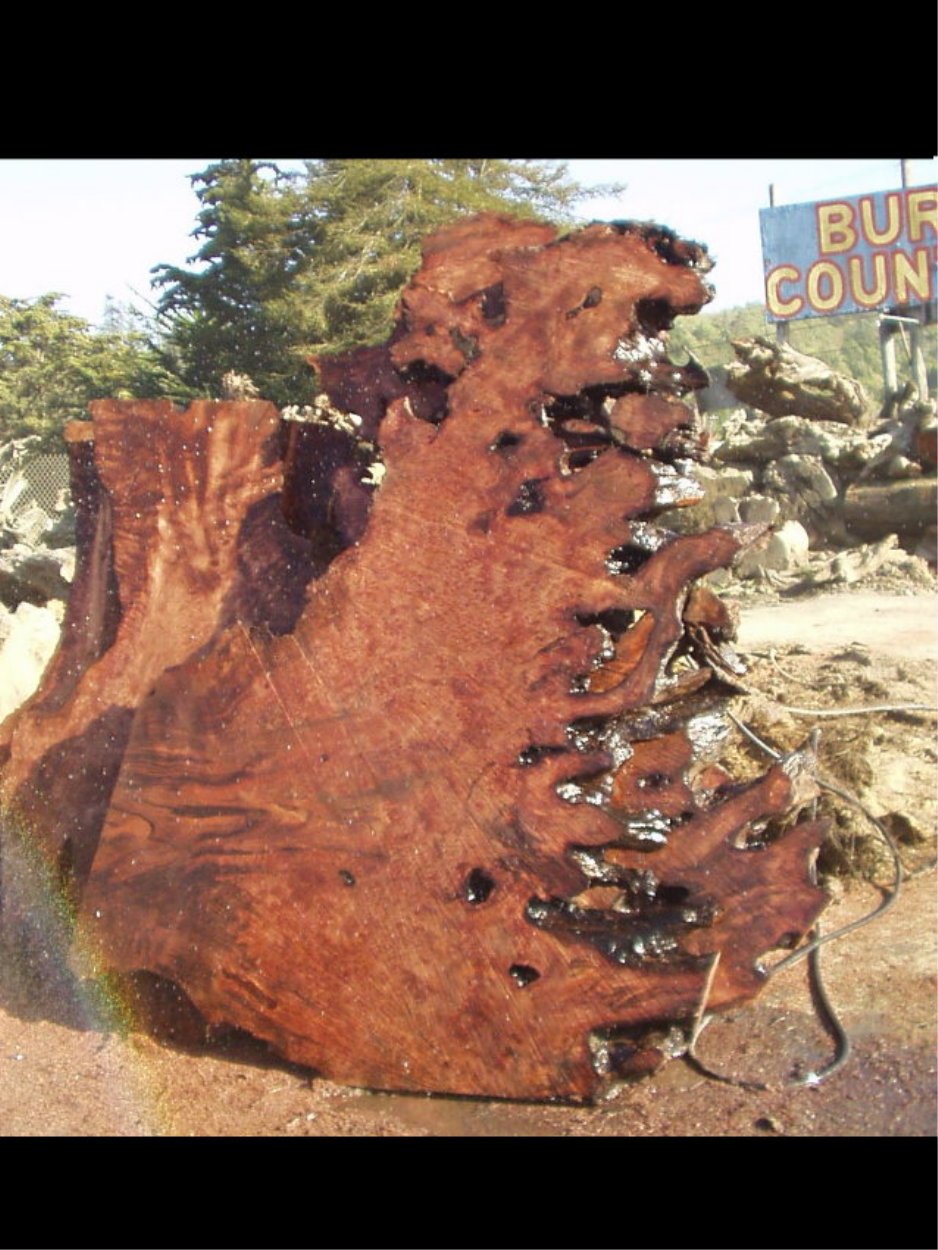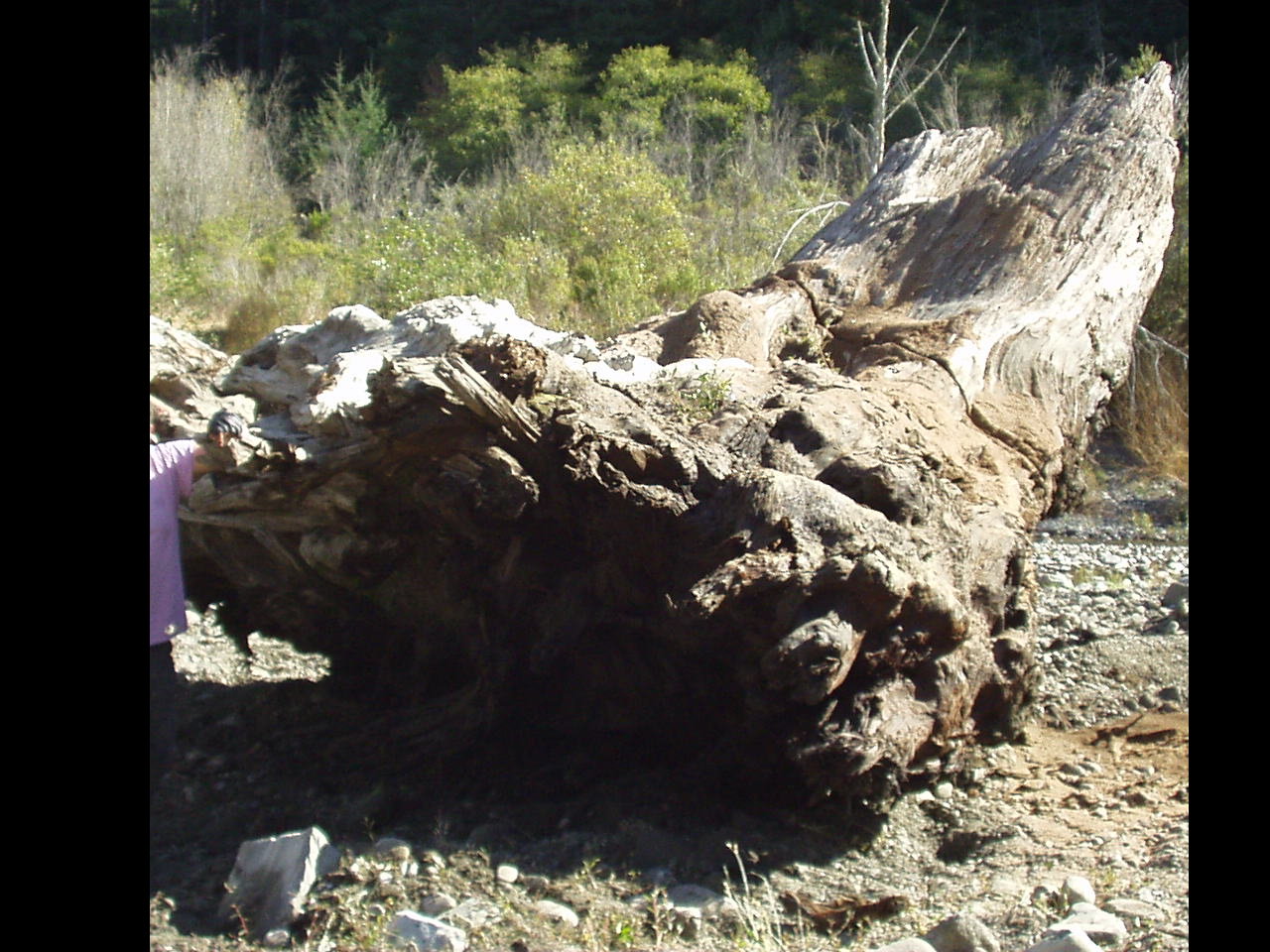
This set of photographs is to show you what is involved in producing a burl table slab from a whole redwood stump.
The first thing
that you have to do is find a redwood stump that has burl in it. The chances
of finding a stump that has a good amount of burl in it are about
1 in 1000. Once we have found a stump with burl in it , we have to cut it up
into pieces that are small enough to be loaded on a lowboy or similar truck.

![]()
Once we have the wood at our location it is cleaned with a high pressure water
blaster that puts out 2200 to 2800 psi. This cleaning process can take
from as little as 2 hours to 2 days to clean all of the dirt and rocks
out of the root system. We sometimes have to spend hours with an air hammer
chisleing huge rocks out that the wood has grown round.![]()

![]()
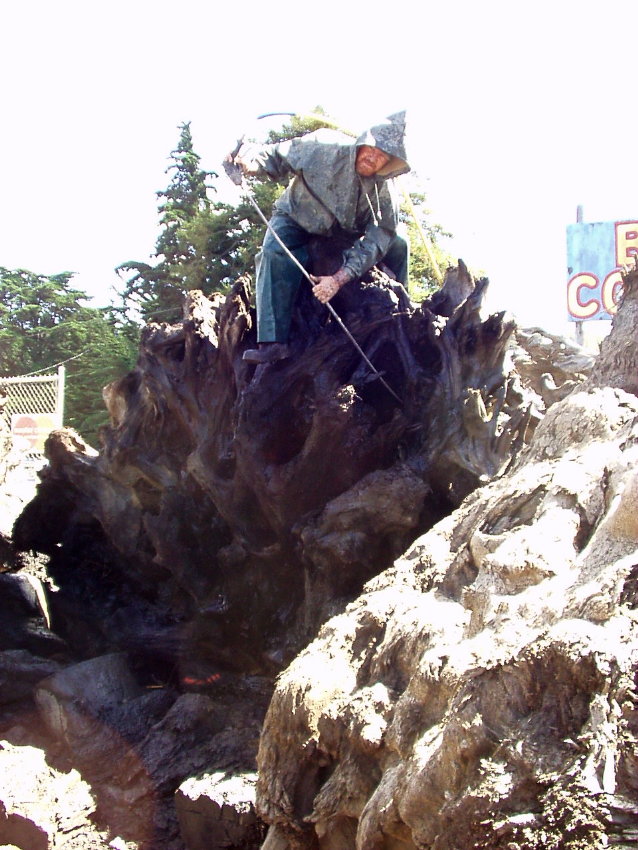
The cleaned stump is then closely looked at to determine what would be the best
angle to cut the stump to produce the best burl slabs out of it. If the
cut is made the wrong way you will end up with wood that is small, cross cut,
or the burl pattern is running the wrong way. The first cut is made free hand
with a chainsaw that has a bar that is from 4' to 7' long. This is called the
face cut and this what the mill will be attached to.![]()
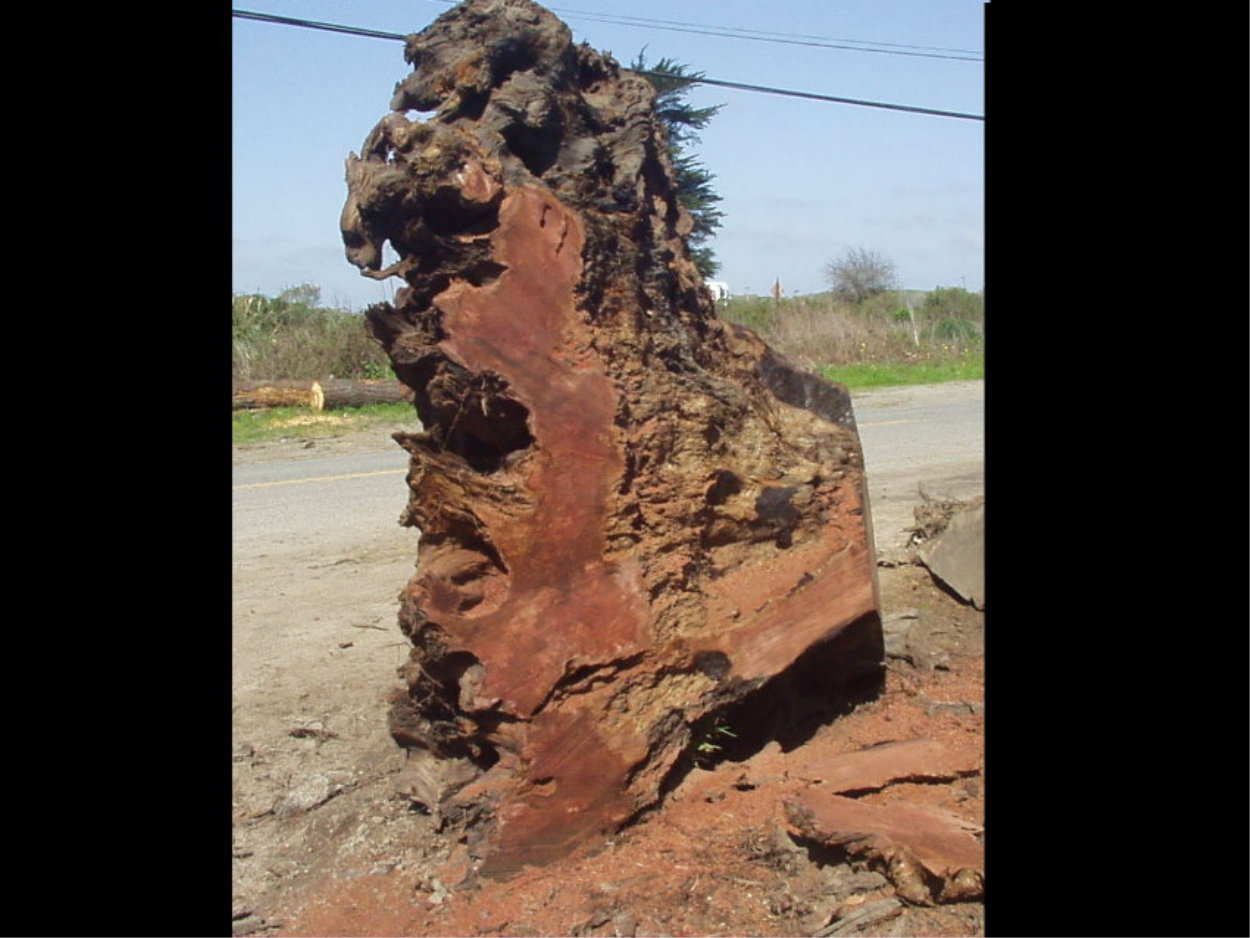

The stump is then set up so the face cut is as flat as possible and the guide
rails or the "ladder" is nailed down for the alaskan mill to ride
on. The alaskan mill is nothing more than two poles that are attached to the
bar of the chainsaw at each end. A 2" x 12" board is attached to the
poles with metal tube stock and it has a treaded rod on it that allows us to
raise and lower the mill to cut thicker or thinner slabs. The board rides on
the rails and the bar with the chain on it hangs down below the ladder and is
pulled through the wood slowly. To operate this , you have one person run the
powerhead and one holds onto the "stinger handle" that is attached
to the tip of the bar.![]()
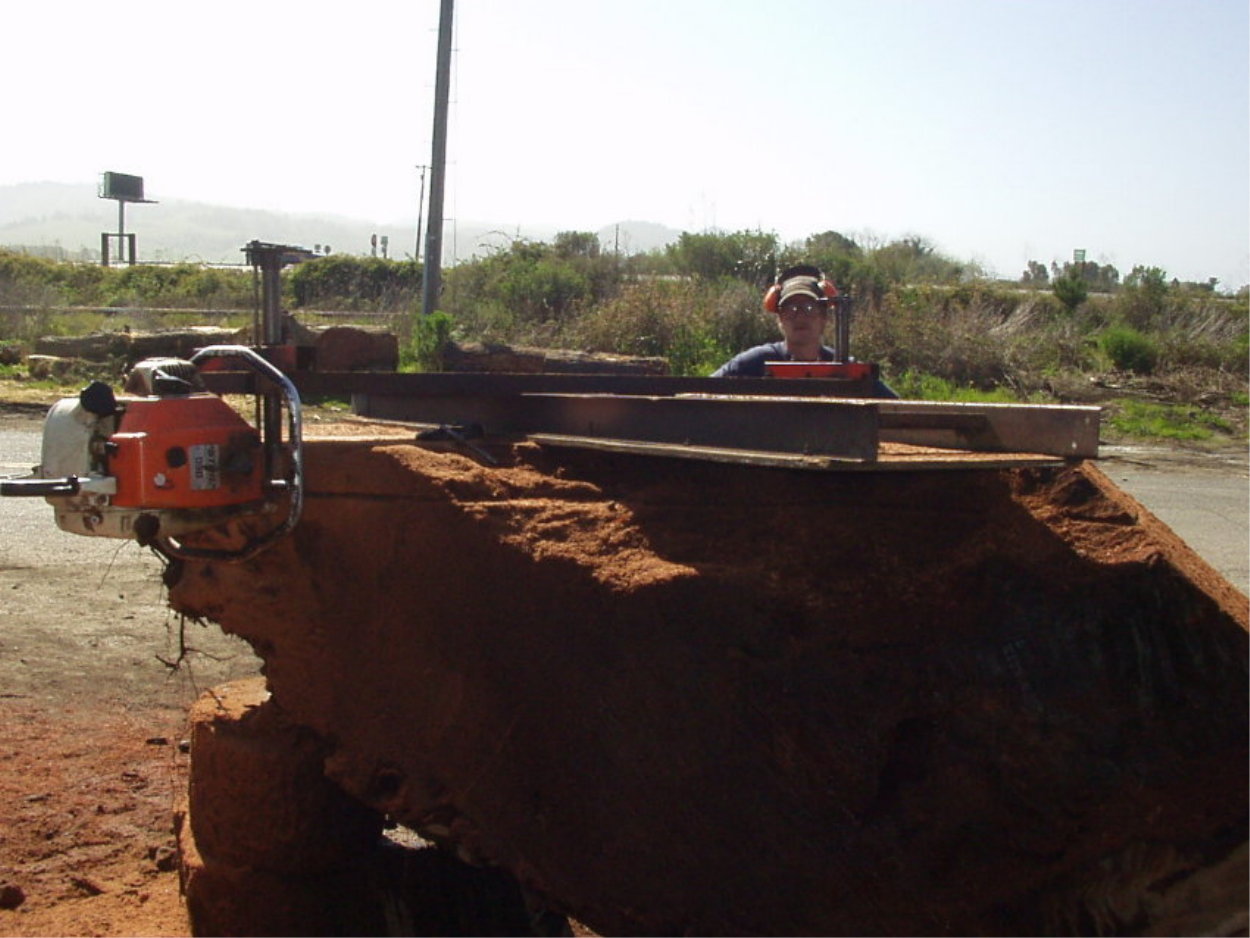

Sometimes we hit a pocket of dirt or rock that the tree grew around and the chain is dulled. If we are lucky we get the cut off without having to stop, pull out, sharpen, and finish the cut. The cutting of burl slabs is nothing like cutting a clean vertical grain log.
The end result of this process is the beautiful burl table slabs that we offer
to you , our valued customers.![]()
